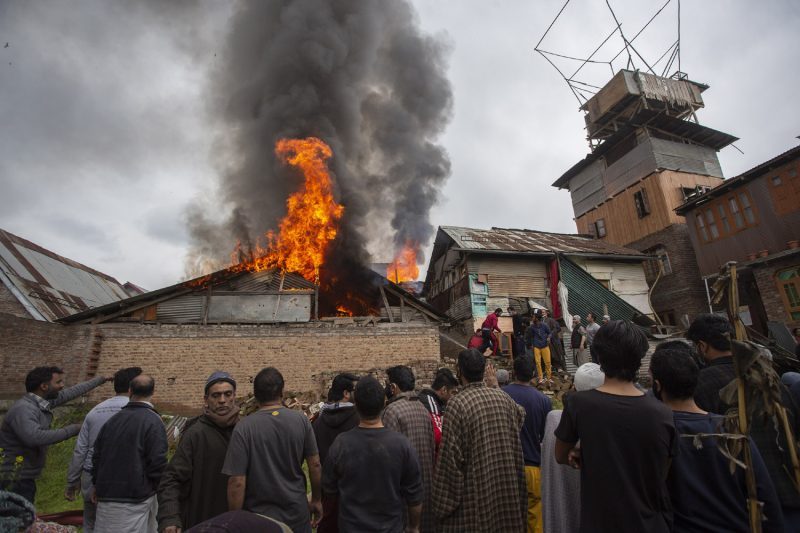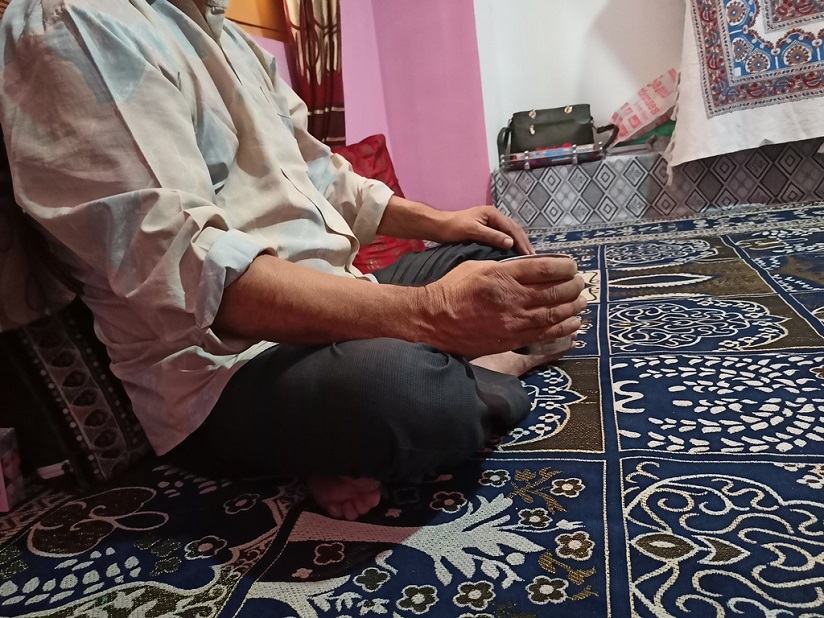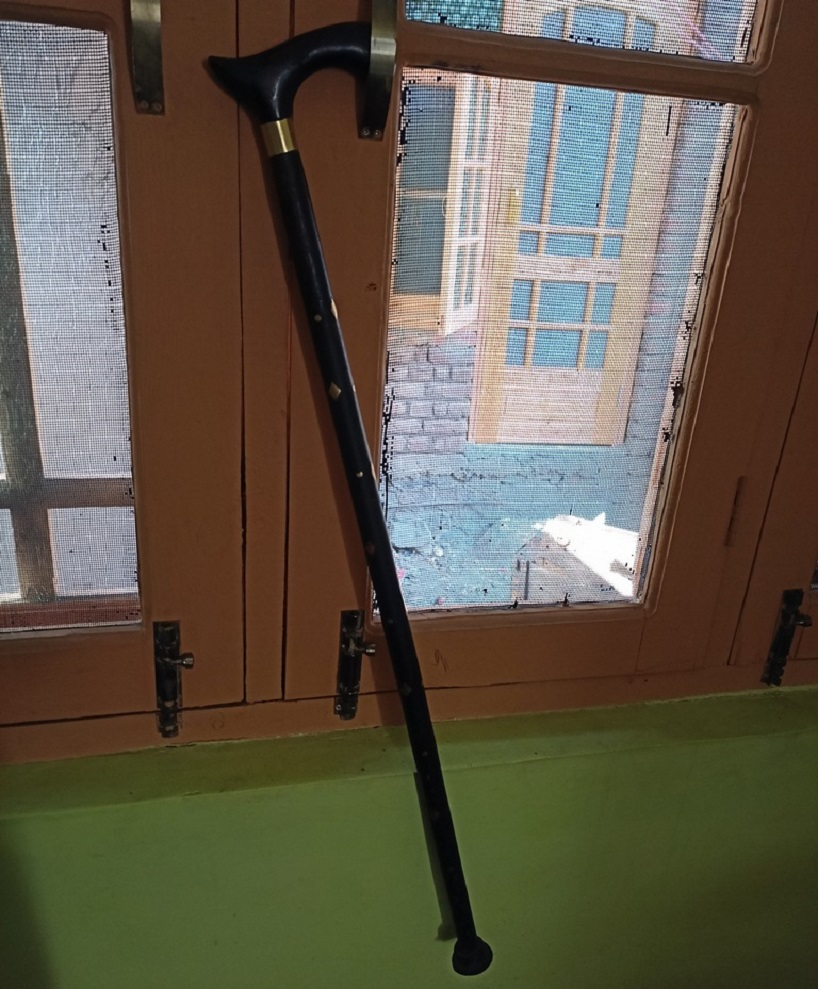
Behind Kashmir’s blazing situation, human costs are steeply rising and making life miserable for the survivors.
By Tabia Masoodi
FAROOQ Sofi gets uneasy every time he hears fire-truck rumbling on the Nallamar Road in Srinagar. The alarming sound has become his worst nightmare—reminding him of his crippled condition created by the charred home he cherished after spending his lifetime savings in its construction.
But the big blaze that emerged from his hometown—Kanimazar, Nawakadal—not only rendered him paralytic but also pushed his family into penury.
Two years later as Kashmir is witnessing frequent fire incidents, this shy tailor in his mid-fifties still looks rattled. The flames reducing his neighbourhood to a scorched earth often return to haunt him these days.
“These ongoing fire incidents take me back to the night of Shab-e-Qadr of 2020 when the wild flames unleashed hell on my neighbourhood,” Farooq says with a fretful face. “I become anxious even when I’m no longer in the firing line.”
As per the latest data, fire incidents have already consumed property worth Rs. 560 crore in the last six years in Kashmir. In Srinagar district only, the data suggests a clear spike in the fire incidents since January 2022.
Last year as well, the summer capital witnessed the highest number of fire incidents among the 2000 plus fire episodes causing a whopping loss of over Rs. 70 crore to the people of Kashmir. “The city being congested is one of the main reasons that it witnessed the highest number of fire incidents,” Bashir A. Shah, Deputy Director, Fire and Emergency Services (Kashmir), told Kashmir Observer.
But what’s alarming is the steady rise of human cost in these cases. Since 2018, 230 people lost their lives in different fire incidents in Kashmir. The survivors often end up battling the crippled condition for a lifetime.

At Nawa Kadal, the massive fire had erupted after the cordon and consequent clash sealed the fate of Hizb commander Junaid Sehrai among others. The conflagration reduced around 25 houses to charred structures. Among them was Farooq’s “beautiful” home.
A tailor by profession, Farooq had constructed his home two years before the incident. His lifetime savings and bank finance had gone into its construction. “But that fire reduced everything to ashes,” says his elder daughter lamenting over the gutted memories and moments. “Nothing was recovered except for some certificates.”
It wasn’t, however, the only tragedy that befell on the tailor’s family in that year of pandemic. It was the beginning of the worst.
Days later, as the smouldering site ceased to emanate bitter smoke and witnessed a rebuilding wave driven by the massive public support, Farooq went to reconstruct his home. However, the rebuilding process soon proved to be a paralytic phase in his life.
The trauma of homelessness shot up his blood pressure and rendered his right hand movement weak. “He wasn’t hypertensive before, so we confused his condition with exertion and stress,” the daughter details her distressed father’s disturbed state.
But when his health complaint remained constant, the family sought a medical advice. Doctors suggested an MRI scan and even before the reports came in, Farooq’s right side of the body became crippled.

Days later, the reports made it certain that Farooq was in need of an emergency spinal surgery which had to happen within the next 20 days. In case of delay, he was warned of complete body paralysis.
Sensing the gravity of his sickness, Farooq’s family referred their headman to SKIMS, Soura.
“We couldn’t believe what we heard,” continues Farooq’s daughter. “It was shocking for us. He was a healthy person who suddenly needed a spinal surgery.”
The family consulted more medicos to avert the surgery. But it never helped as the tailor had to eventually pass through the surgical blade.
The family had to borrow money for the operation. They also spent the rebuilding relief they got from a local masjid spearheading the fundraising campaign for the fire victims.
Once exhausting all means, Farooq’s children had to step in his shoes to prevent the sinking ship situation. The eldest daughter had to strike a balance between work and studies, while the only son quit education to support the family in challenging times.
“Our lives had completely changed because of our family head’s crippled condition,” says Farooq’s eldest daughter. “We struggled to make ends meet.”
But along with Farooq’s treatment, the family had to end their homelessness. And for that, they took another loan. It only burdened them.

Two years later, Farooq’s health has improved a bit, but he’s far from being normal. Doctors have warned him of grave consequences if he resumes work.
“Since his right side of the body was paralysed, doctors said he can’t put much pressure on his hand,” his daughter says. “Life isn’t the same for him now.”
What’s adding insult to his injury is the ongoing fire situation in Kashmir.
Every time the siren-wailing fire-brigade haunts the city, the night of the torment flashes before Farooq’s eyes and makes him restless.
Follow this link to join our WhatsApp group: Join Now
Be Part of Quality Journalism |
Quality journalism takes a lot of time, money and hard work to produce and despite all the hardships we still do it. Our reporters and editors are working overtime in Kashmir and beyond to cover what you care about, break big stories, and expose injustices that can change lives. Today more people are reading Kashmir Observer than ever, but only a handful are paying while advertising revenues are falling fast. |
| ACT NOW |
| MONTHLY | Rs 100 | |
| YEARLY | Rs 1000 | |
| LIFETIME | Rs 10000 | |










